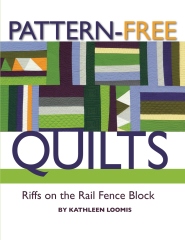One of the highlights of our recent trip around Britain and Ireland was a visit to Donegal, the northernmost county in the Republic of Ireland and the home of the famous Donegal tweed. So when we had a choice of shore excursions that day and one of them was to a woolen factory, I was the first to sign up. We visited Studio Donegal in Kilcar, a small workshop that does every step of the process from spinning to finishing on premises.
Here's the wool ready to enter the carding machine.
After the fibers are combed into parallel strands, they are separated into successively smaller bundles.
When the wool comes out the other end, it has been made into strands not quite as fat as a pencil, wound onto rollers. The rollers are transferred to the spinning mule (we all have heard of the "spinning jenny," and a few years ago I learned about a similar machine called the "spinning jack," and jennies and jacks are just mules, so why not a "spinning mule?").
The apparatus holding the bobbins drives out into the room, drawing out about a meter of the fat wool strands from the rollers. The rollers lock so no more wool can be drawn off.
Then the bobbins spin to put a twist into the strands. While they twist, the apparatus rolls another meter out into the room, drawing the fat strands of wool into smaller, longer yarns, less than half the thickness of the original.
The apparatus drives back to the rollers, while the bobbins spin to wind up the new yarn. And we start over again.
I'll pick up the story tomorrow in the weaving room.











No comments:
Post a Comment